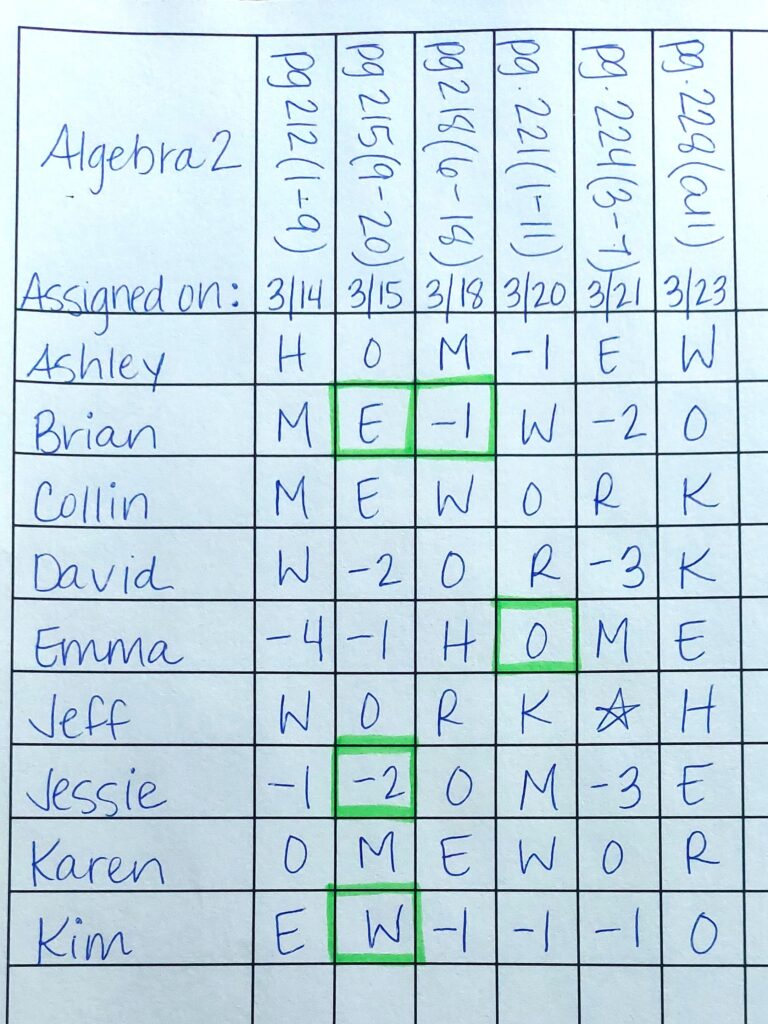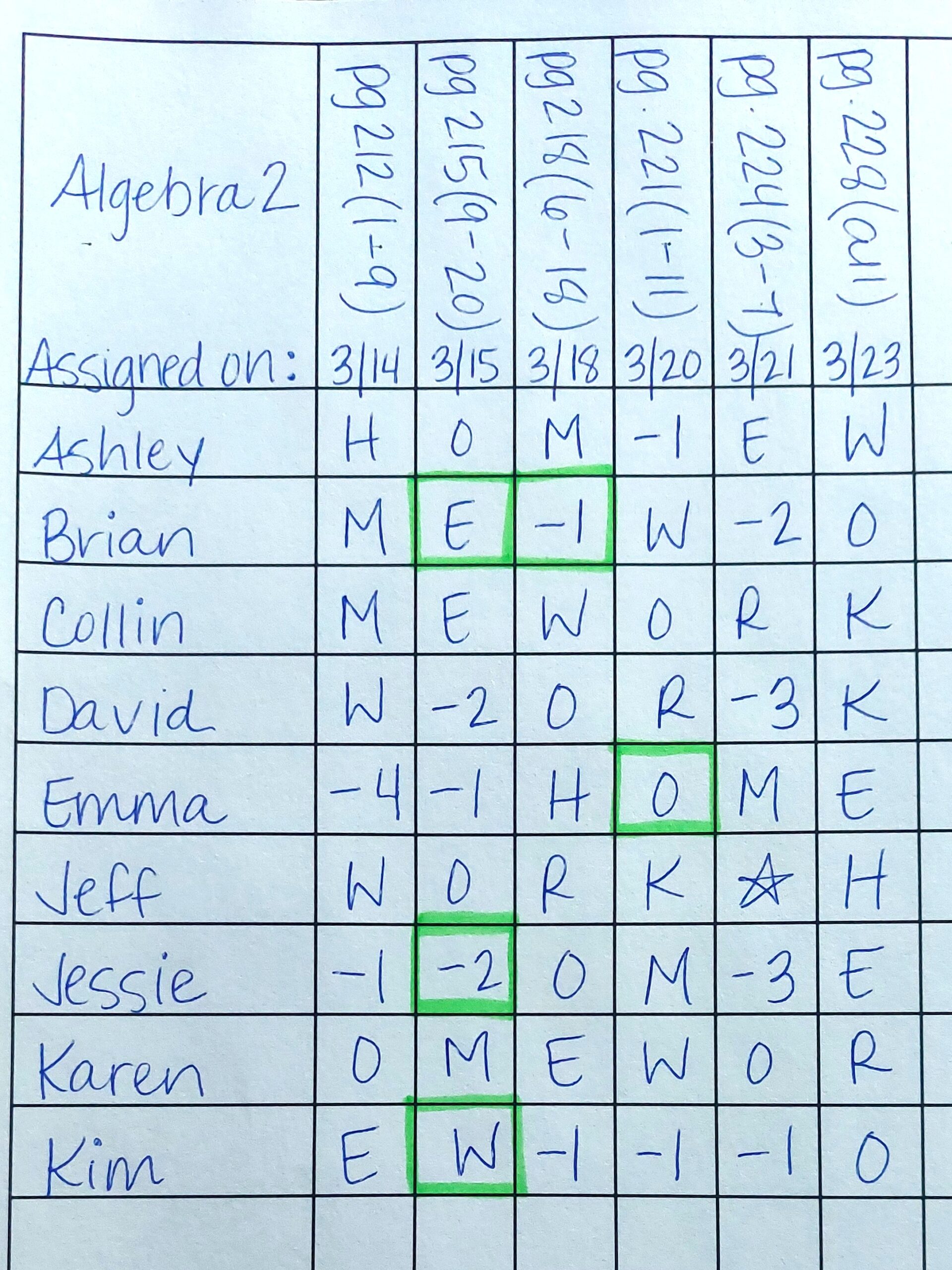Grading math homework seems to be one of those hot button issues these days. Should we “grade” math homework at all? Is it fair to grade since it’s technically practice? If my students know I’m not grading it, will they do it? I have opinions about all of these things. Let’s chat.
In my school, we use a particular curriculum that requires assigning math homework almost nightly. I do not disagree with this, and here’s why. My lessons are structured pretty closely to this framework: homework check, quick review, new material, practice problems, review. Within that framework, there is lots of room for excitement and variability, but for the most part, we don’t get tons of time to practice new material the day I teach it. ENTER: HOMEWORK
I feel homework is important because it gives the student that time to independently practice the concepts we learned that day. It also is a time to cement concepts we learned in previous lessons.
In my experience, if students are not held accountable for their homework quality, they will not give their best. Period. I do not personally believe that accountability needs to be a grade 100% based on accuracy, but it does need to be a small factor.
So, let’s get to it. Here’s my exact process for grading math homework in my classroom:
First, everyone starts out with a 100 for their homework grade at the beginning of the quarter. I put this 100 into our online gradebook to be displayed as a desirable grade that one would want to keep.
Students keep their 100 by following these guidelines: work is on time, work is accurate, work follows proper formatting, and all work is shown. Let’s break those four items down a little further.
Is your work ON TIME?
I require my students’ work to be turned in prior to the bell ringing. As soon as the bell rings, I collect the work from the turn-in bin and begin to do my initial checks for completion.
On time work also applies to make-up work. In our school, students get one day for each day absent to turn in their make-up work. If this requirement is not met, I deduct a point from those days’ assignments.
Is your work ACCURATE?
Now, I realize this is where I may lose some of you. I understand that grading math homework for accuracy seems counterproductive when I just said it’s supposed to be time to practice. Let’s, however, think of this point more so about accountability.
I do not require a perfect homework paper. Depending on the number of problems assigned, I usually expect about a 50% accuracy. Also, as a teacher, you know it’s pretty easily detected when students are giving their best effort. If the answer is 1,413 and you came up with 3, I have questions…
Is your work PROPERLY FORMATTED?
Now, this one is up to your own personal preference. A few requirements I have in my classroom: heading with name, date, assignment must be in the upper right corner of the paper; no paper shavings on the edge where you tore it from your notebook; skip lines between problems, circle your answers, and use PENCIL ONLY (a big one).
If all of these formatting items are met, it’s an easy one point for you.
Is all your WORK SHOWN?
Ah, the math teacher motto. SHOW YOUR WORK! Even when I allow the use of a calculator for certain concepts, I still require my students to write down the process they used to reach an answer. It’s just important.
Now, there are exceptions to this, and I make those very clear. For simple arithmetic or one-step problems, I allow my students to simply write the answer. I tell them that there are some things they just need to know, which allows for just an answer.
How do I keep track of points?

You may be wondering how I track points. I use a very simple grid system that I print out (one for each class) and keep with me in a folder that also houses my make-up work slips. It’s a super simple format, but if you’re interested in just printing one out, here is a link to my TPT store where you’ll find the freebie.
If a student gets points deducted, I simply write “-2” or whatever the deduction happens to be. If a student is absent that day, I highlight the box, so I know there needs to be a follow-up upon their return.
At the end of three weeks, I add up the point deductions and subtract that from the 100 I already entered into the gradebook. I do this periodically to help parents and students see their grade dropping gradually instead of a bombshell drop at the end of the quarter.
AN ADDED INCENTIVE! Students whose homework has no point deductions for that particular assignment earn a letter toward spelling out the work HOMEWORK. When the word is spelled, I inform them they get the next assignment off! I notate the “freebie” with a star on my sheet.
This system has worked very well for me. It’s efficient, timesaving, and doesn’t stress me out. If you would like to know more about how I conduct a homework checking time in my classroom, head on over here to read more.

Leave a Reply